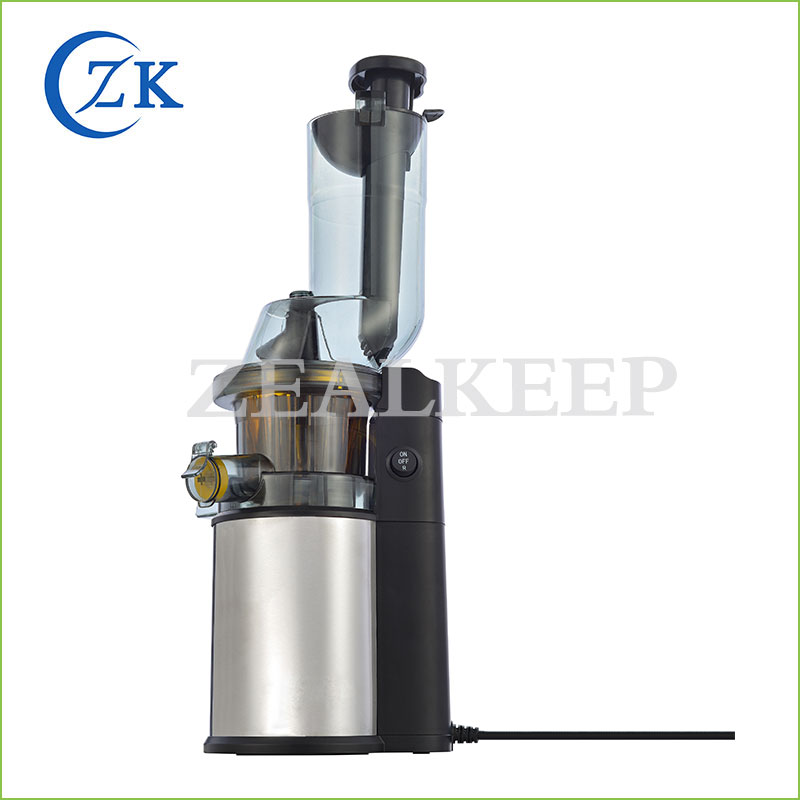Traditional Juicer vs. Slow Juicer: Which One Preserves Nutrients Better?
2025-09-01
While traditional high-speed juicers are convenient and fast, the juice they produce quickly darkens in color and significantly reduces its flavor. The juice lacks the original sweetness of fruits and vegetables, and it feels like all the nutrients have been lost. For better taste and nutritional value, slow juicers are gradually gaining popularity. Let's explore the differences between these two types of juicers with Zealkeep.

High-speed juicers
High-speed juicers spin very fast. Their blades cut through fruits and vegetables. This cutting makes the blades generate a lot of heat. For example, take juicing an orange. You will notice the juice is a little warm. Some nutrients are very sensitive to heat. Vitamin C is one of these nutrients. When the temperature goes up, these nutrients get destroyed. High speeds also make fruits and vegetables touch more air. More air makes oxidation happen faster. Faster oxidation leads to more nutrient loss.
Slow juicers
Slow juicers work in a totally different way from high-speed juicers. High-speed juicers use blades to cut. Slow juicers don’t. They use an auger instead. The auger is like a small squeezer. It rotates slowly. It gets juice out little by little. It doesn’t slice in a violent way like a blade does. You can feel how slow it is when you use it to juice. It is also much quieter than a traditional juicer. The juice it makes looks bright and lively. Its color is similar to the color of freshly cut fruit. The taste is really good too. The auger’s slow speed doesn’t make much heat. Less heat means less damage to nutrients like vitamin C. At the same time, slow speed makes fruits and vegetables touch less air. Less air means much less oxidation. Less oxidation helps keep more nutrients.
Purchasing Considerations
First, consider the speed. Slow speeds maximize nutrient retention. Some juicers with too high speeds can still cause oxidation and discoloration. Generally speaking, slower speeds produce significantly higher quality juice.
Second, check the material. The material of the part where the juicer comes into contact with the fruits and vegetables is crucial. Poor quality can create an unpleasant odor, affecting the taste of the juice. Zealkeep juicers are made of safe, odor-free materials, making them reliable to use.
Finally, you can also measure the pulp rate. A low pulp rate indicates that the juice is fully extracted from the fruits and vegetables, preventing nutrient waste.
Tips
First, you need to know one thing. Fruits and vegetables have different hardness. You should handle them in different ways. Take firm fruits and vegetables. Apples and carrots are firm ones. It is a good idea to cut them into small pieces first. Then you add the pieces to the juicer. Doing this helps get more juice out. If you cut them too big, the juicer will have a hard time. A hard time for the juicer affects how much juice you get. It also gets in the way of your body absorbing nutrients. Now take softer fruits and vegetables. Strawberries and grapes are soft ones. You can add them to the juicer directly.
Remember to clean the Slow Juicer promptly after each use. The sooner you do it, the easier it will be. Use clean water and a brush to clean thoroughly. If you don't clean it promptly, the residue will deteriorate in the juicer, creating an unpleasant odor, which will affect the taste of the juice the next time you use it.
This demonstrates that the Slow Juicer excels at preserving nutrients in fruits and vegetables. Its slow grinding speed reduces oxidation, and the augers also minimize nutrient loss. If there are children in your family who need complementary foods, it can also retain the nutrition and delicate taste of fruits and vegetables, which can be better absorbed by the body.




